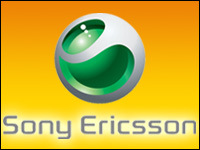
Sony Ericsson’s president of North America, Najmi Jarwala, has stepped down amid rumors that the joint venture between the two companies may soon be dissolved.
The announcement comes at a dismal time for Sony Ericsson. The company is expecting first-quarter losses of between 340 million euros (US$459 million) and 390 million euros ($526 million).
The company expects to ship just 14 million phones in the first quarter, down 42 percent compared to the fourth quarter of 2008, when Sony Ericsson sold 24.2 million phones. The average selling price for the phones is expected to be 120 euros ($162).
Last quarter, sales at Sony Ericsson were down 23 percent compared to the fourth quarter of 2007. The company said the decline in year-over-year sales was driven by lower volumes, due to the global economic slowdown that resulted in contracting consumer demand and decreased availability of credit.
Sony’s stock was down .05 percent to $21.68 per share in mid-day trading on Tuesday.
Planning to Divorce?
Though both sides deny it, the market is rampant with speculation that Sony and Ericsson will dissolve the joint venture the two companies first formed in 2001.
One of the issues the JV faces is that Ericsson’s core business has changed since the entity was first created.
“Ericsson was fairly successful making phones in Europe in the early days of the joint venture,” said Charles Golvin, a wireless telecom analyst with Forrester Research, “but its business today is all about the network. Ericsson runs a lot of networks for carriers and the margins are a lot better on that equipment and those services.”
To a certain extent, mobile handsets have become commodities, Golvin told the E-Commerce Times.
“To be successful, you have to be like Nokia, with large volumes and high-end pieces that give you higher margins,” he said. “It doesn’t seem like the joint venture is bringing strategic value to Ericsson at this point.”
The landscape has also changed for the wireless carriers since the late 1990s and early 2000s, when they were spending billions to build out their networks, said Andy Castonguay, a wireless analyst with the Yankee Group.
Back then, companies like Ericsson would bundle their wireless networking equipment with phones in an attempt to secure deals with the wireless carriers. They don’t do that anymore, Castonguay told the E-Commerce Times.
Flagging Handset Business
Sony Ericsson is best known for its camera and media phones such as the Walkman — a device that allows consumers to download, stream and store music on their phones.
Yet, Sony Ericsson has had difficulty getting wireless carriers outside of Europe to adopt its phones, which makes it harder to get them into the hands of consumers.
“Several years ago, [Sony Ericsson] decided not to sell any CDMA handsets,” Golvin said. “So, no Verizon or Sprint, which takes half the U.S. market off the table, well more than half the Canadian market off the table, and part of the Japanese market and the entire Korean market off the table.”
Sony Ericsson has also missed the high end of the market, which is dominated by the Apple iPhone and Research In Motion’s family of BlackBerry devices, as well as new entrants such as the T-Mobile G1, which is powered by Google’s Android operating system.
“They haven’t had a smartphone competitor on the level of the BlackBerry or an iPhone,” Golvin said. “They introduced the Xperia X1 for Windows Mobile for the high end of the market, but they couldn’t get a U.S. operator here to bring it to market.”
Squeezed at the Low End
At the same time, Sony Ericsson hasn’t really competed well in the high-volume, low-end market either, according to the Yankee Group’s Castonguay.
“Sony Ericsson’s device portfolio has done well in terms of design and form factor, and they’ve gotten good reviews for their user interfaces,” he noted. “But the game of being a large volume handset manufacturer is very complex and without consistent strategy to wed top design with aggressive retail and distribution support, you’ll have difficulties securing long-term relationships with carriers.”
The phone makers dominating the low-end market in the U.S. are Samsung and LG — and, to a certain extent, Motorola, he said.











































Social Media
See all Social Media